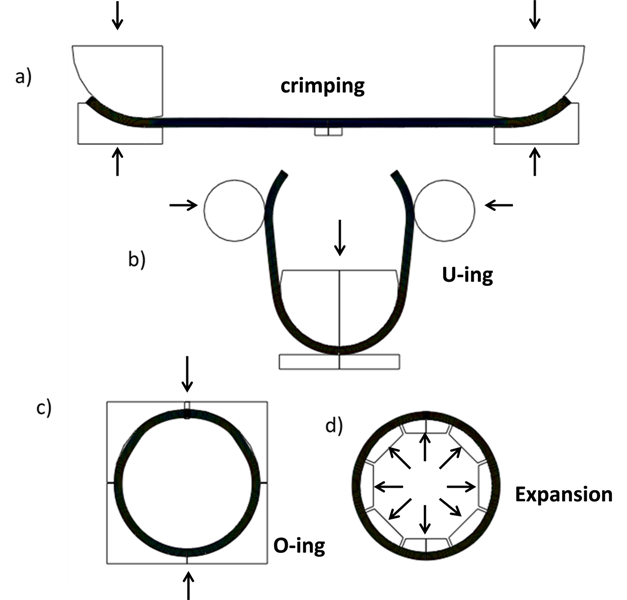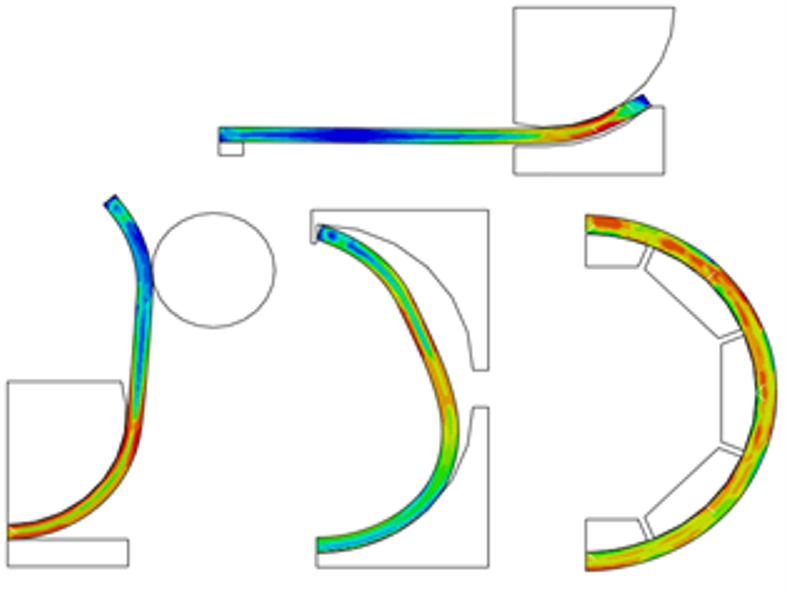UOE pipe forming simulation using advanced cyclic-plasticity models
by Giannoula Chatzopoulou
Graduate Diploma Thesis, February 2014
ABSTRACT
A popular method for manufacturing large-diameter-thickness pipes which are candidates for offshore pipeline applications are commonly manufactured by cold-forming plates through the UOE process. This process consists of four sequential forming steps. In this study the UOE forming process has been modeled numerically. The present study consists of a numerical simulation through the application of Finite Element code ABAQUS and focuses on the effect of the applied expansion to the geometrical characteristics of the formed pipe, as well as on the evaluation of the residual stresses field. The key issue for an accurate simulation of the manufacturing process is the use of an appropriate material model that describes accurately the cyclic behavior of steel material during the manufacturing process, mainly because of the Bauschinger effect. Towards this purpose, an advanced plasticity model, based on the “bounding-surface” concept is adopted, initially introduced by Tseng- and Lee in 1983, and implemented in the FE code in the form of a user-subroutine (UMAT).

Figure 1: UOE pipe forming process.

Figure 2: Numerical FE model for simulating UOE pipe forming process.